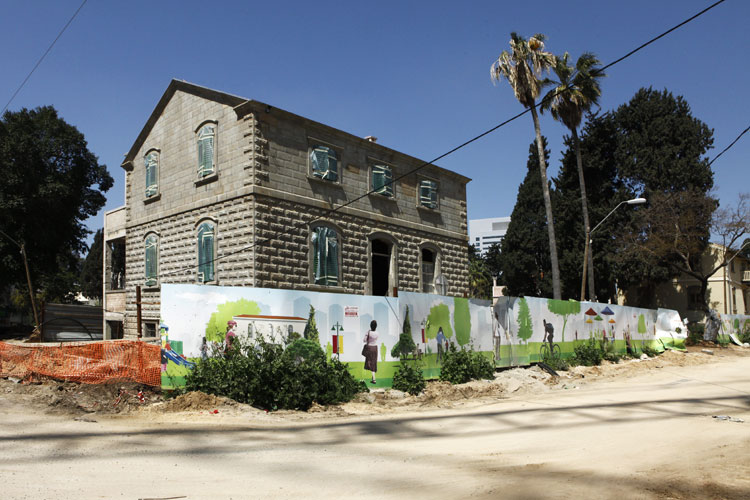Israel:The village of Sarona in Tel Aviv: Unterschied zwischen den Versionen
Aus goethe.de
(→More) |
|||
| Zeile 7: | Zeile 7: | ||
The fact that Sarona has been allocated such a prominent place in the city’s history is thanks to the determined commitment of monument conservationists. The village was once founded by the Templers (religious believers), who set off in the 19th century to seek their salvation in the Holy Land. Even now their heritage evokes mixed feelings in Israel. The thing is, the Protestants – of whom there were about 2000 – were admittedly responsible for a huge modernisation boom in Palestine at that time, and their settlements – the architecture, agriculture and transport systems – served as inspiration for the first Jewish pioneers. However in the thirties many of them turned out to be fervent supporters of National Socialism. That put an end to their existence in the Holy Land, the British Mandate expelled them in 1941.{{#newBox:listbox}} | The fact that Sarona has been allocated such a prominent place in the city’s history is thanks to the determined commitment of monument conservationists. The village was once founded by the Templers (religious believers), who set off in the 19th century to seek their salvation in the Holy Land. Even now their heritage evokes mixed feelings in Israel. The thing is, the Protestants – of whom there were about 2000 – were admittedly responsible for a huge modernisation boom in Palestine at that time, and their settlements – the architecture, agriculture and transport systems – served as inspiration for the first Jewish pioneers. However in the thirties many of them turned out to be fervent supporters of National Socialism. That put an end to their existence in the Holy Land, the British Mandate expelled them in 1941.{{#newBox:listbox}} | ||
==More== | ==More== | ||
| − | * [[Mossad and Knights Templar / A sign of maturity]]{{#newBox:listbox}} | + | * [[Israel:Mossad and Knights Templar / A sign of maturity | Mossad and Knights Templar / A sign of maturity]]{{#newBox:listbox}} |
| + | |||
==Related links== | ==Related links== | ||
* [http://www.saronatlv.co.il/indexEN.asp Sarona Tel-Aviv (saronatlv.co.il] | * [http://www.saronatlv.co.il/indexEN.asp Sarona Tel-Aviv (saronatlv.co.il] | ||
Version vom 27. November 2012, 16:54 Uhr
“Built in 1872” is written in Gothic script above the doorways. The wooden shutters of the two-storey family homes feature small cast-iron figures. Inside, the buildings are done out with solid wooden floors and wall stencilling. A spot of quintessentially German homeland right in the middle of Tel Aviv, which has been elaborately renovated. Now the plan is to create an oasis of relaxation reminiscent of the village of Sarona in bygone times – in amongst the office tower blocks with their high-tech glazed façades.
Conflicting history
The fact that Sarona has been allocated such a prominent place in the city’s history is thanks to the determined commitment of monument conservationists. The village was once founded by the Templers (religious believers), who set off in the 19th century to seek their salvation in the Holy Land. Even now their heritage evokes mixed feelings in Israel. The thing is, the Protestants – of whom there were about 2000 – were admittedly responsible for a huge modernisation boom in Palestine at that time, and their settlements – the architecture, agriculture and transport systems – served as inspiration for the first Jewish pioneers. However in the thirties many of them turned out to be fervent supporters of National Socialism. That put an end to their existence in the Holy Land, the British Mandate expelled them in 1941.German Traces in Israel
A project by the Goethe-Institut Israel
Author: Gisela Dachs
Photos: Noa Ben-Shalom

